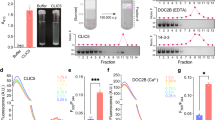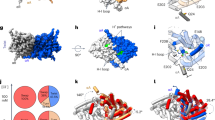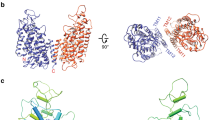Although the CFTR protein alone is sufficient to generate a regulated chloride channel, it is unknown how many of the polypeptides form the channel. Using biochemical and functional assays, we demonstrate that the CFTR polypeptide is a monomer. CFTR sediments as a monomer in a linear, continuous sucrose gradient. Cells co-expressing different epitope-tagged CFTR provide no evidence of co-assembly in immunoprecipitation and nickel affinity binding experiments. Co-expressed wild-type and DF508 CFTR are without influence on each other in their ability to progress through the secretory pathway, suggesting they do not associate in the endoplasmic reticulum. No hybrid conducting single channels are seen in planar lipid bilayers with which membrane vesicles from cells co-expressing similar amounts of two different CFTR conduction species have been fused.
Similar content being viewed by others
Author information
Authors and Affiliations
Rights and permissions
About this article
Cite this article
Chen, JH., Chang, XB., Aleksandrov, A. et al. CFTR is a Monomer: Biochemical and Functional Evidence . J. Membrane Biol. 188, 55–71 (2002). https://doi.org/10.1007/s00232-001-0174-2
Received:
Issue Date:
DOI: https://doi.org/10.1007/s00232-001-0174-2




